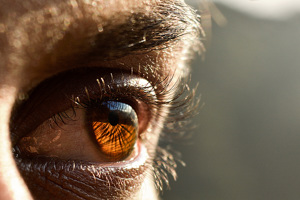The Wedgwood pension scheme and the case of the disappearing museum
For anyone thinking of donating antiques or other valuable gifts to be part of a museum collection there is a moral to follow: beware how you give and to who you give it to! This was never better demonstrated than in the example of the Wedgwood collection and the case of the disappearing museum.
The ramifications of the Wedgwood’s pension scheme continues to trouble the Courts. In January 2018 the Courts issued their latest decision in the rumbling death rattles that saw the insolvency of the Wedgwood Pottery trading companies (part of the Waterford Wedgwood Group) and, key for these purposes, the insolvency of the Wedgwood Museum, which was a charitable company.
It is worth a brief trip down memory lane. The Wedgwood Pottery trading companies became insolvent and went into administration in 2009. Many of these trading companies had, unfortunately for them, also been participating employers in the Wedgwood Pension Scheme (the “Scheme”). The Scheme provided pensions benefits based on a calculation that used members' final salaries and years of pensionable service. This meant that the financial obligations of the participating employers covered both ongoing contributions and, if the Scheme commenced winding-up, the obligation to meet the shortfall between the then assets and the costs of securing those pensions with insurance policies.
At the point the trading companies become insolvent, the Wedgwood Museum (which was also a participating employer in the Scheme) was not insolvent because its assets (including the value of the extensive pottery collection) exceeded its individual liabilities (including its employer debt of approximately £100,000).
Unfortunately for the museum, the Scheme was what is called a “last man standing” arrangement, meaning that any deficit left over once the insolvent employers had paid their share of the debts that followed their insolvency, became the sole responsibility of the Museum (as, unfortunately for it, the last employer standing). As the trading companies were insolvent, this meant that they could not pay their full shares of the debts due. The Museum’s liability therefore increased from £100,000 to an eye watering £134million (approx). Unsurprisingly, this meant that the Museum also entered administration because it could not meet the £134million deficit due.
At this point, and with insolvency practitioners involved, the question unsurprisingly became, what assets did the Museum actually have that were available to meet this deficit and did that include the historical collection (including the pottery)? Press reports at the time valued the historical collection at around £15million.
The key point, subsequently decided by the UK Courts, was whether the collection was the Museum's beneficial property and so available to be sold to meet insolvency costs (including the pension debt), or whether it was held on special charitable trusts and as such unavailable for distribution upon insolvency.
Unfortunately, the Courts decided that no special charitable trust had been declared over the collection so it was available to be sold to meet the Museum’s debts.
The problem came from the fact that when the settlors gave the collection as a gift (at various points in time), the deeds recording the terms of that gift did not provide for it to be held by the Museum on separate (or special) charitable trusts, but instead said the Museum was to be the beneficial owner. As the judge succinctly put it:
"This is a sad conclusion for those who are concerned to preserve a collection which is, as everyone recognises, part of our cultural heritage and of immense importance, but it is the combined result of the pension protection and insolvency legislation. It is at least a legitimate view that the tragedy that befalls working people when their pensions are affected by insolvency is at least as great as the tragedy that has befallen, or may now befall, the collection in this case."
While a subsequent fundraising campaign raised £15.75million in order to purchase the Wedgwood collection for the nation the entire saga does raise wider pension questions that potential donors of valuable arts and antiques should consider before they make a gift.
Should my gift be given under a permanent endowment/ through a charitable trust or as a straight gift?
A permanent endowment is where an asset is passed to a charity, but with a restriction that permits the charity to use the income the asset produces but not its capital value. A special trust is property held and administered by or on behalf of a charity, but through a separate trust for a special purpose of that charity, so that the asset itself, never belongs to the charity.
In its guidance the Charity Commission states that a charitable company cannot hold permanent endowment as part of its charitable assets but that the charity company can act as a trustee of a separate permanently endowed charity.
Therefore, if there are concerns that the museum/receiving entity that will benefit from the gift may be at potential risk of insolvency, whether through its exposure to pension liabilities or other financial risk, any potential donor should consider which option to take, before giving the gift, in order to ring-fence the donation from the general assets of the receiving entity.
What are the risks of pension liabilities impacting on my gift?
If the receiving entity participates in a defined benefit pension arrangement, and the asset will belong to the entity without restriction or trust (so is not held under a separate endowment or charitable trust), then that gift could be at risk in insolvency.
Even if the receiving entity has only a small pension liability, as the Wedgwood Museum found out, if the pension scheme is a last man standing arrangement, and the receiving employer is unfortunate enough to still be standing when the music stops, the potential financial exposure could be material.
Even if the receiving entity does not have a defined benefit pension scheme itself, any donor needs to check whether there are any such pension schemes in the wider receiving entity UK group. This is because the UK Pensions Regulator has various powers under which it can pierce the corporate vail and make companies that are connected or associated with each other liable for each other’s UK pension liabilities. If this is the case, then again, a donor would be wise to consider the structure under which it makes its donation.
The V&A was gifted the collection from the Art Fund, which is still located in the Wedgwood Museum as part of the award winning World of Wedgwood Experience Centre in Barlaston, Stoke on Trent.















